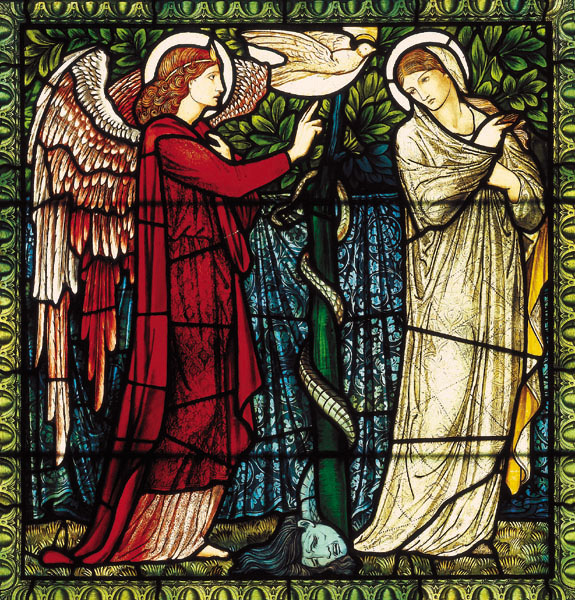
Hail, O favored one, the Lord is with you!” (Luke 1:28), the red-robed angel Gabriel announces to the apprehensive virgin Mary, in this 1874 stained glass designed by the English painter Edward Burne-Jones and executed by his friend and fellow artist William Morris.
Only the Gospel of Luke describes the moment when Mary learns she will become the mother of God. Although Luke describes the event as occurring in or near Mary’s home, Burne-Jones sets it instead in the Garden of Eden: Between the two figures stands the Tree of Knowledge, from which hangs the dead serpent (shown with a human head) who tempted Eve to eat the tree’s forbidden fruit. In so doing, Eve committed humankind’s first sin. As punishment, God made Adam and Eve mortal— “You are dust, and to dust you shall return” (Genesis 3:19)—and expelled them both from Eden.
Burne-Jones belonged to the Pre-Raphaelite movement in late Victorian art—so-called because its founders believed the only art worth emulating was what had come before the 16th-century painter Raphael. By placing the virtuous Mary in the Garden, Burne-Jones expresses a theme with strong roots in medieval and Renaissance painting: Mary is the new Eve. Whereas Eve introduced sin and death to the world, Mary brings the promise of redemption and eternal life through the birth and death of her son, Jesus.
Already a library member? Log in here.
Institution user? Log in with your IP address.

